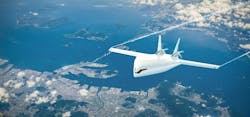Natilus adopts Siemens software to expedite development of next-gen cargo aircraft
SAN DIEGO - Natilus in San Diego sought a technology solution to accelerate the development of its prototype next-generation cargo aircraft. They found their solution from Siemens Digital Industries Software in Plano, Texas. Siemens says its Xcelerator can reduce build time by 50%.
Founded in 2016 by Aleksey Matyushev and Anatoly Star, the U.S.-based aerospace company aims to change the freight transport industry with its next-generation blended-wing-body aircraft, which promises 1.5 times more cargo capacity and 50% less fuel consumption compared to current cargo aircraft.
“Siemens' immersive technology is revolutionizing how we develop our next-generation aircraft. It's not just about seeing the design; it's about experiencing it in a way that enhances our engineering decisions and accelerates innovation,” said Aleksey Matyushev, CEO of Natilus.
Related: ZeroAvia, Natilus partner on hydrogen-electric cargo aircraft
Natilus utilizes Siemens' NX X software for complex surface design and mechanical engineering and Teamcenter software for Product Lifecycle Management (PLM). These tools, part of the Siemens Xcelerator portfolio, enable secure, cloud-based collaboration among Natilus' geographically dispersed development team.
“Natilus is setting the benchmark for the power of digital transformation and agility in the aerospace industry,” said Todd Tuthill, vice president for Aerospace and Defense at Siemens Digital Industries Software.
Natilus is also an early adopter of NX immersive designer, using the Sony XR Head Mounted Display for enhanced 3D interaction and collaboration. This technology allows Natilus to create full-scale digital twins of their aircraft, improving customer engagement and engineering processes.
“When it comes to building next-generation aircraft, there is immense value in taking a model from a 2D screen to a full-scale 85-foot wingspan digital twin in our hangar,” Matyushev said.
